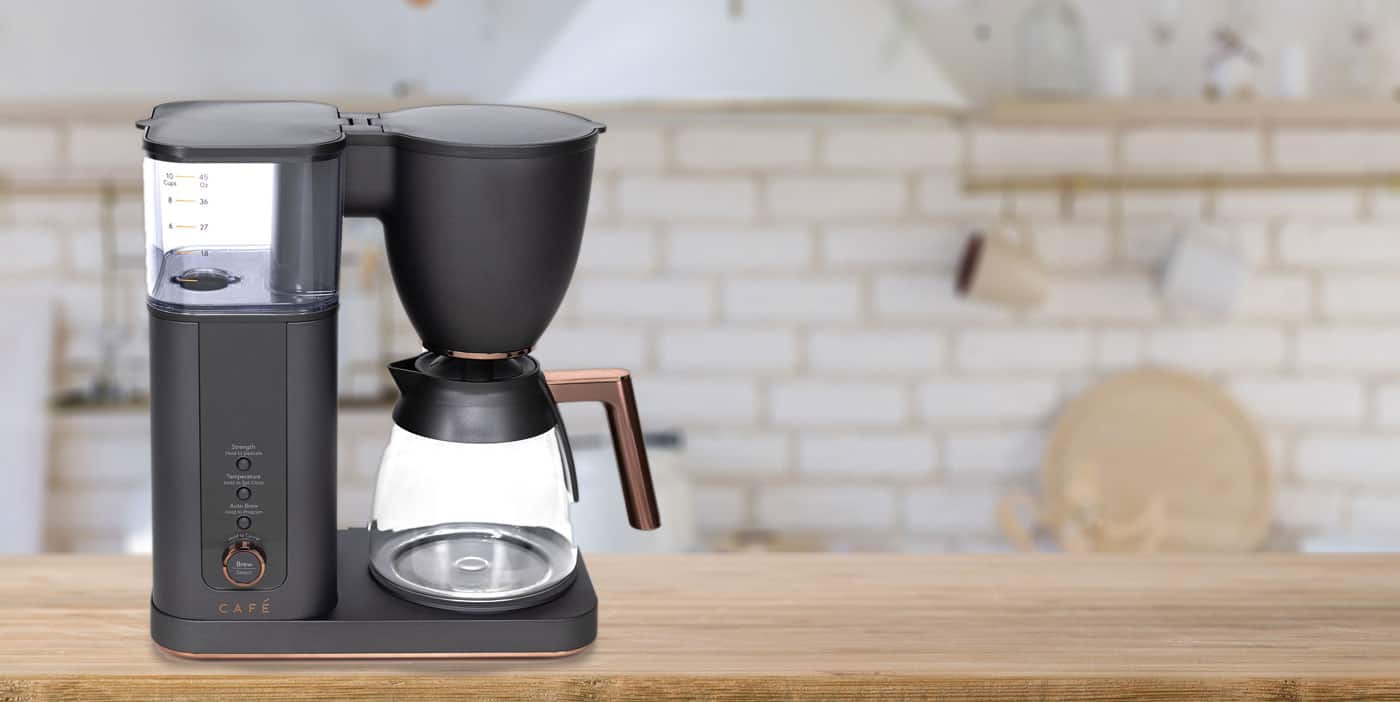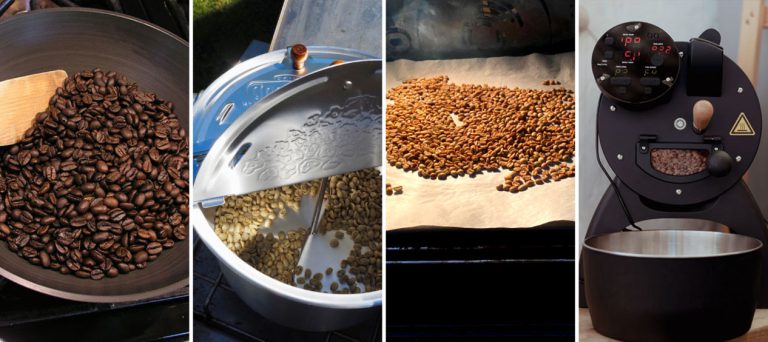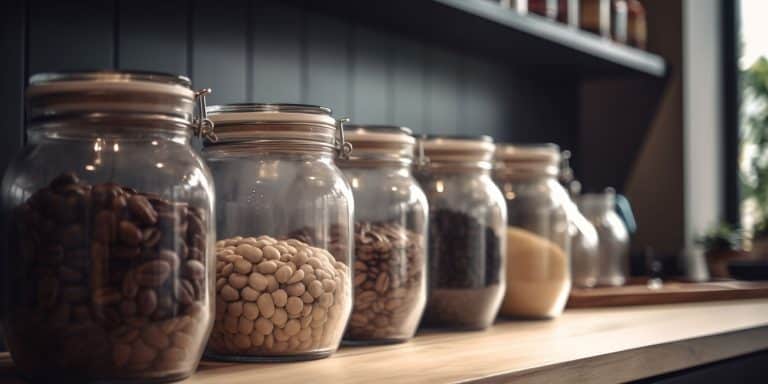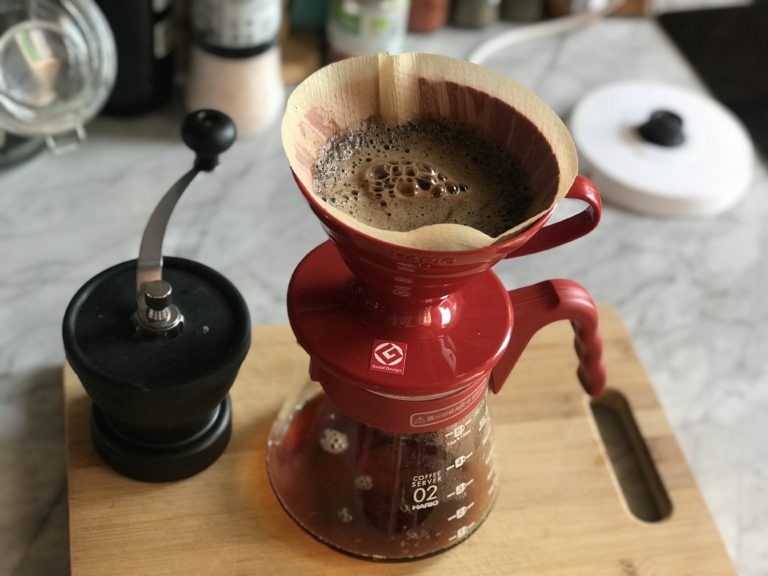8 More Ways to Clean Your Coffee Maker Without Vinegar
The coffee community knows full well: white vinegar is the secret to a clean coffee machine.
But while there’s convenience in using this condiment, it may not always be the solution for everyone.
The strong smell might trigger your allergies, or maybe you’re just not a big fan.
That’s why I want to share with you eight more methods you can use to clean a coffee maker without resorting to vinegar. Keep reading if you’re ready to discover some truly effective (and even natural) solutions for keeping your coffee machine clean – no matter how often you’ve been using it lately.
Alternative Ways to Clean Your Coffee Maker Without Vinegar
Yeast and mold are known to thrive in the machine’s water reservoir (according to the 2011 NSF International Household Germ Study), so cleaning your coffee maker regularly is something need to do.
But if you’re skipping vinegar for your coffee maker cleaning, you can check other ways to clean a coffee machine with other common materials.
1. Lemon Juice
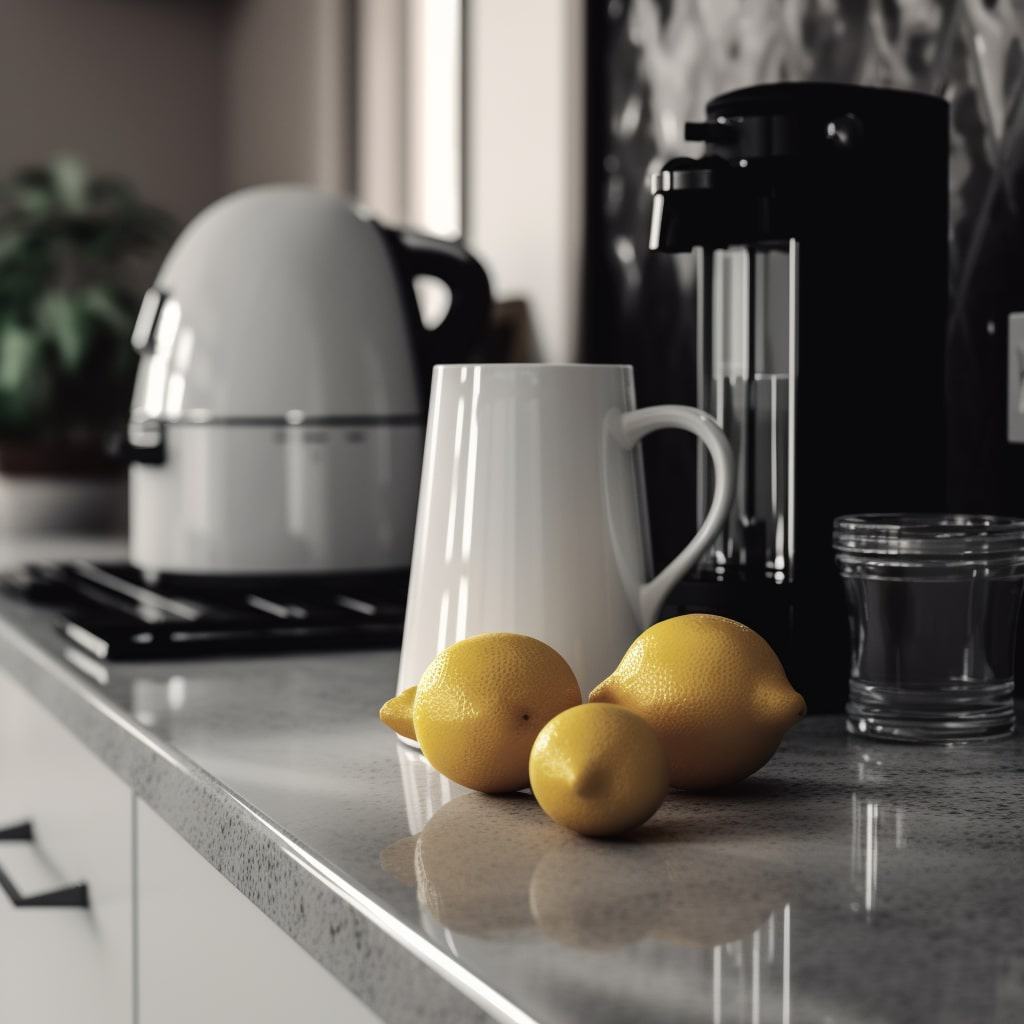
If you’re looking for an easy and effective way to clean your coffee maker without the strong smell of vinegar, I highly recommend lemon juice.
The acidity of the citrus fruit can be just as powerful at breaking down grease and residue build-up on your equipment. Plus, it offers up a refreshing zesty smell that will leave your kitchen smelling delightful.
How to clean your coffee maker using lemon juice:
- Turn on your coffee maker then run a cycle with cold water to rinse it from leftover coffee grounds.
- Fill the reservoir with a mixture of two tablespoons of lemon juice and water, and run a brew cycle.
- Run another brew cycle to clean the brewing system.
- Give the coffee carafe and filter basket a rinse with warm soapy water before running another complete cycle (this time without any added ingredients).
- Wipe the surfaces of the machine’s exterior to finish.
2. Baking Soda

You can also use baking soda, which is one of the best natural cleaners and deodorizers out there.
It’s an amazing substance to use for cleaning your coffee maker due to its alkaline properties which cut through grease, grime, and any lingering odors.
How to clean your coffee maker with baking soda:
- Mix one part of baking soda with four parts of warm water in the carafe until there are no visible lumps or soda particles.
- Remove the filter basket, pour the mixture into the water chamber, and turn on the coffee maker.
- After the cycle is complete, run 2 more cycles with clean water to rinse the coffee maker.
- To finish, take out all of the removable parts and then rinse them with lukewarm water before reassembling the machine.
3. Cream of Tartar
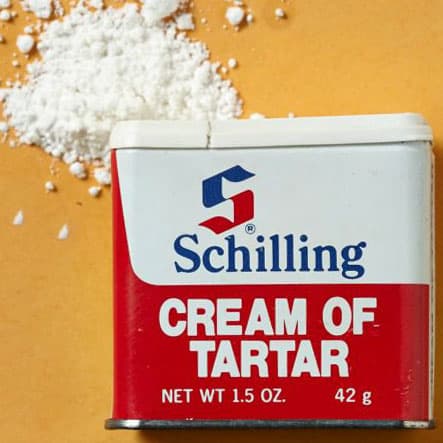
If you are looking for something gentle, cream of tartar can do an amazing job cleaning and deodorizing your machine. Cream of tartar isn’t actually a cream, but a powder that resembles baking soda.
It’s not as strong or as acidic as the other methods on this list, but it gets the job done.
How to clean a coffee maker with cream of tartar:
- Mix water with 2 to 3 teaspoons of cream of tartar.
- Put it on the coffee maker then run a cycle.
- After the brew cycle has finished, let it sit in the pot for 10 minutes.
- Using a soft cloth, scrub the pot.
- Rinse thoroughly and run two cycles of clean water to remove any lingering cream of tartar.
4. Hydrogen Peroxide
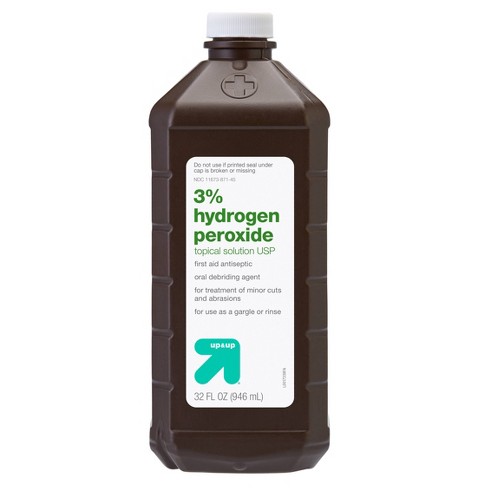
Another option is hydrogen peroxide which can remove limescale and corrosive substances without leaving any harmful substances behind.
You can actually use it for a lot of other cleaning purposes as well, but let’s just stick with the coffee maker here.
How to clean your coffee maker using hydrogen peroxide:
- Combine one cup of hydrogen peroxide with two cups of water and run the mixture through a brew cycle.
Alternatively, you can use a cup of 3% hydrogen peroxide. - Pour this mixture into your empty coffee maker and then run it through a brew cycle as usual.
- Discard the solution and run two cycles of water to rinse.
5. Dish Soap
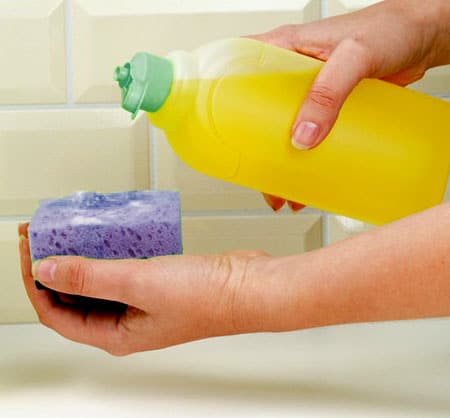
Using dish soap to clean your coffee maker is a gentle and effective way to keep it sparkling clean. Dish soap is readily available, inexpensive, and safe for everyday cleaning.
However, I still recommend using other solutions for deep cleaning your machine. Dish soap will not remove everything.
How to clean your coffee maker using dish soap:
- Begin by filling up your carafe with warm water and adding one tablespoon of liquid dish soap to it. Give it a good stir until the solution is mixed together.
- Now pour this mixture into the reservoir where you usually put the water for brewing coffee – making sure not to exceed its capacity level.
- Put a filter into the basket and run a cycle before stopping it midway through.
- Grab a sponge or damp cloth and use it to remove any remaining residue from within your machine – paying extra attention to areas such as the handles, buttons, switches, lids, and other parts that come into direct contact with food particles or liquids often.
- Complete the brewing cycle.
- Replace the filter and fill up the carafe again with fresh warm water only. Turn on the cycle and let it complete without interruption this time around – giving all those parts an additional rinse.
- Run another cycle with fresh water, just to be safe.
- Discard the remaining solution down your sink with running water to flush out any leftover debris or buildup thoroughly.
6. Salt and Ice Water
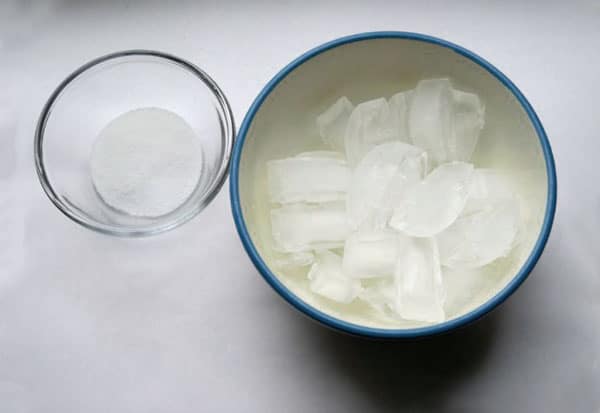
Using salt and ice water is an ideal method for removing grime from carafes and glass components. The salt helps to remove coffee stains and mineral deposits caused by hard water.
It’s especially effective when cleaning a Chemex as well.
How to clean your coffee maker using salt and ice water:
- Start by pouring 1 cup of crushed ice into the coffee maker’s carafe or coffee pot. Add in 4 teaspoons of non-iodized salt and 1 tablespoon of cold water.
- Gently swirl the mixture together using your gloved hands – this will help break apart the tough grime that has built up over time. Make sure to cover all sides.
- Run the coffee maker through a brewing cycle as if you were making coffee.
- Once finished, rinse out the coffee maker thoroughly with warm water until all traces of frozen salt are gone.
- Dry off any remaining moisture on the inside and outside parts of your coffee maker, making sure there’s no dampness left behind.
7. Borax
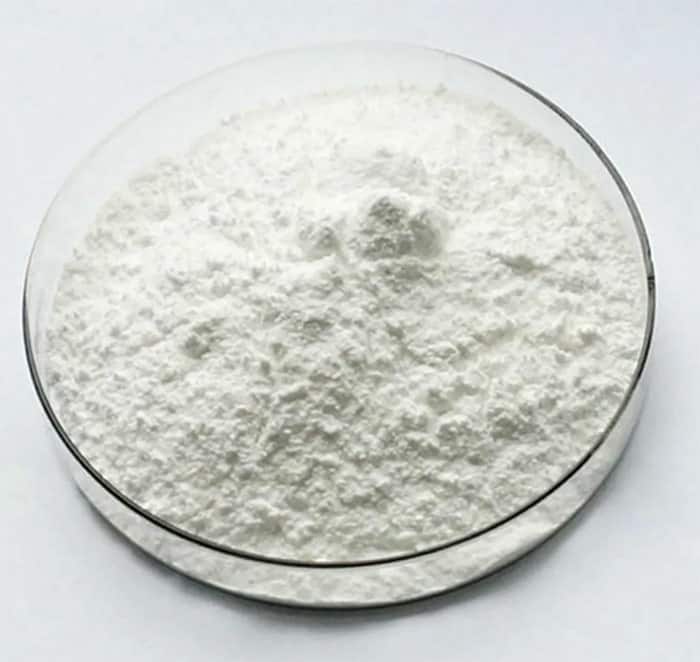
For a thorough cleaning of your coffee maker, using Borax (aka sodium-tetraborate) is a great alternative to vinegar.
Borax has many uses, but as an all-purpose cleaning agent, Borax has both sanitizing and cleansing properties perfect for taking care of minor messes as well as deep cleans.
It is a crystalline powder, and looks just like baking soda.
How you can clean your coffee maker using borax:
- Mix 1/4 cup of Borax with hot water and put it in the water reservoir of your coffeemaker.
- Run a regular brew cycle and let it sit for 15-20 minutes.
- After it’s finished running, fill up the reservoir with clean water and set it for another cycle to rinse out any remaining Borax residue from within the coffeemaker.
8. Rubbing Alcohol
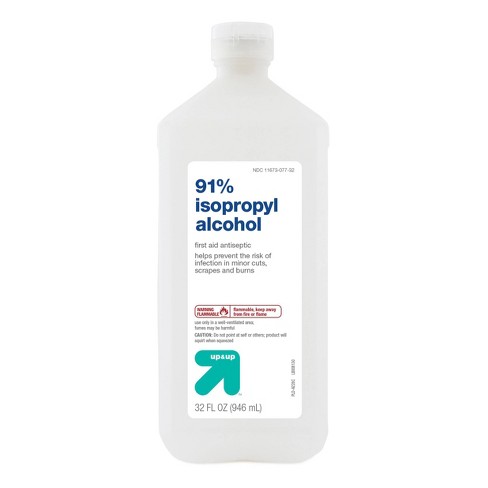
When it comes to using alcohol as a cleaner for your coffee maker, you can opt for either rubbing alcohol or vodka.
Both have great degreasing and sanitizing properties but take note: always dilute the alcohol.
Never pour straight alcohol into the water reservoir – this could damage some internal parts of your coffee maker.
How to clean your coffee maker using rubbing alcohol:
- Mix 25% of alcohol with 75% water in the reservoir and run a complete brewing cycle.
- After completing one full cycle, flush the equipment twice with fresh water to remove any residual cleaning solutions from inside the machine.
The Pros & Cons of Using Vinegar
Vinegar is a commonly used cleaning agent and many people use it to clean their coffee makers. However, vinegar has its drawbacks when it comes to cleaning your coffee maker.
Here’s a breakdown of the pros and cons of cleaning your coffee maker with vinegar:
Pros
Cons
Frequently Asked Questions
Here are answers to some questions you may have around cleaning your machine without vinegar.
If you use your coffee maker every day, it should be cleaned about once per month. This will help remove coffee residue, oils, and bacteria that can accumulate over time and affect the taste of your coffee.
That being said, if you can see an accumulation of limescale then it’s time for a thorough cleaning.
Be sure to rinse the basket every time after use, wipe the exterior of the machine with a damp cloth, and change the coffee maker’s water filter regularly (if it has one).
Bleach may be a great cleaning agent, but you should not use it on your coffee maker. Bleach is toxic and may poison you if not rinsed properly. The chemical can also damage your machine and leave remnants of bleach smell in your coffee.
A good rule of thumb is to keep the cleanliness of everything that touches your ingredients. Aside from your kitchenware and cups, be sure to clean your coffee grinder to avoid any residual coffee from the last grind affecting your latest cup.
Conclusion
From lemon juice and baking soda, all the way through salt & ice water and rubbing alcohol – you’ve got a lot of options now for cleaning your machine, no matter what your scent or solution preference is.
You can also check out my in-depth articles on cleaning a Chemex, Moka pot, and AeroPress coffee makers.
Who says cleaning has to be such a hassle? Say goodbye to vinegar and hello to a spic and span coffeemaker.

